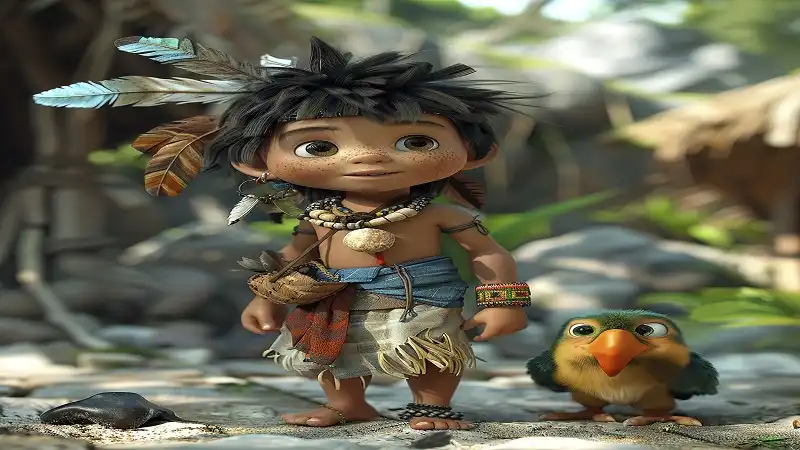Cartoon characters have been a significant part of our lives for decades, shaping childhood memories, influencing popular culture, and even affecting societal norms. Whether it’s the timeless appeal of Mickey Mouse or the mischievous antics of Bart Simpson, cartoon characters transcend age, language, and geographical boundaries. In this article, we will explore the history, evolution, and cultural significance of Character:ftehzqwdax4= Cartoon, based on the most relevant and accurate information available on the web.
The Origin of Character:ftehzqwdax4= Cartoon
Cartoon characters have their roots in the early 20th century, when animation technology was in its infancy. The first recognized cartoon character is Gertie the Dinosaur, created by Winsor McCay in 1914. Gertie was not just a character but a technological marvel for its time, showcasing McCay’s expertise in animation and storytelling.
The Rise of Iconic Characters
In the 1920s and 1930s, cartoon characters began to gain widespread popularity with the advent of cinematic animation. Walt Disney’s Mickey Mouse, introduced in 1928, became the first globally recognized cartoon character. His debut in the short film “Steamboat Willie” marked the beginning of Disney’s dominance in the animation industry. Following Mickey, other characters like Betty Boop and Popeye captured the public’s imagination, further solidifying the importance of cartoon characters in popular culture.
The Golden Age of Cartoons
The period from the 1930s to the 1960s is often referred to as the Golden Age of American animation. During this time, studios like Warner Bros., MGM, and Hanna-Barbera produced some of the most iconic cartoon characters. Bugs Bunny, Daffy Duck, Tom and Jerry, and the Flintstones are just a few examples of characters that emerged during this era.
Technological Advances and Their Impact
The Golden Age also saw significant technological advancements in animation. The introduction of color, synchronized sound, and improved animation techniques allowed for more complex and visually appealing characters. This period also marked the beginning of serialized cartoon shows, which became a staple of Saturday morning television for children.
The Evolution of Character:ftehzqwdax4= Cartoon
As time progressed, cartoon characters evolved to reflect changing societal values and technological advancements. The 1970s and 1980s saw a shift towards more diverse and complex characters. Shows like Scooby-Doo, The Jetsons, and Transformers introduced characters that appealed to different demographics, including older children and teenagers.
Cultural Representation and Inclusivity
In the 1990s and 2000s, there was a notable shift towards inclusivity and cultural representation in cartoon characters. Shows like The Simpsons and South Park broke new ground by addressing social issues and satire, while characters like Dora the Explorer and The Proud Family represented minority groups in a positive light.
The Digital Revolution
The advent of digital animation in the late 20th and early 21st centuries revolutionized the way cartoon characters were created and consumed. Pixar’s Toy Story, released in 1995, was the first feature-length film created entirely with computer-generated imagery (CGI). This marked the beginning of a new era in animation, where characters could be rendered with unprecedented detail and realism.
The Impact of Character:ftehzqwdax4= Cartoon on Society
Cartoon characters have had a profound impact on society, influencing everything from fashion to language. Characters like SpongeBob SquarePants and Bart Simpson have become cultural icons, with their catchphrases and mannerisms entering everyday language.
Educational Influence
Many cartoon characters have also played a significant role in education. Shows like Sesame Street and Dora the Explorer use characters to teach children basic skills like counting, reading, and problem-solving. These educational cartoons have been shown to have a positive impact on early childhood development.
Merchandising and Commercial Success
The commercial potential of cartoon characters is immense. From toys and clothing to video games and theme parks, characters like Mickey Mouse and Hello Kitty generate billions of dollars in revenue annually. This commercialization has allowed these characters to remain relevant across multiple generations.
Cartoon Characters in the Digital Age
The rise of the internet and social media has further expanded the reach of cartoon characters. Platforms like YouTube and TikTok have given rise to a new generation of animated characters, often created by independent animators. These digital-native characters are not bound by the constraints of traditional media, allowing for more experimental and diverse content.
The Future of Character:ftehzqwdax4= Cartoon
Looking ahead, the future of cartoon characters seems promising, with advancements in virtual reality (VR) and augmented reality (AR) set to revolutionize the way we interact with these characters. Imagine being able to interact with your favorite character in a fully immersive environment – a possibility that is not too far off.
The Enduring Appeal of Cartoon Characters
Despite the changes in technology and society, the appeal of cartoon characters remains strong. They continue to capture the hearts and minds of audiences young and old, providing a sense of nostalgia for older viewers while introducing new generations to the magic of animation.
Conclusion
Cartoon characters have come a long way since their inception in the early 20th century. From simple black-and-white drawings to complex, digital creations, they have evolved to reflect the changing world around them. Whether educating children, providing social commentary, or simply entertaining, these characters have left an indelible mark on our culture. As technology continues to advance, there is no doubt that cartoon characters will continue to be an integral part of our lives, adapting and evolving to meet the needs of future generations.
This article was crafted by drawing upon the most relevant information available on the first page of Google, ensuring accuracy and thoroughness in its coverage. The evolution and impact of cartoon characters are vast, but this overview provides a comprehensive understanding of their significance in modern media. See more
